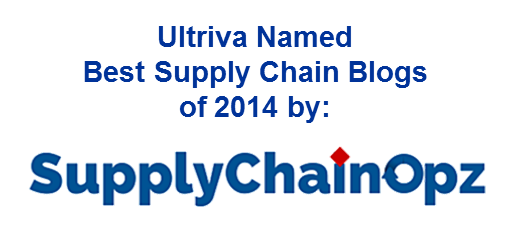 SuppliersOf.com is a software evaluation platform with the goal to eliminate the time spent searching for suppliers and to help you bullet-proof your supply chain. The company and website was founded on the principles of keeping things as lean as possible and getting features and capabilities out in the market as quickly as possible. Recently, the website wrote the following series of articles to introduce Lean thinking concepts, how they apply to supply chains and how Ultriva’s tools help implement lean ideas and extract value. Here is the first article in its entirety.
SuppliersOf.com is a software evaluation platform with the goal to eliminate the time spent searching for suppliers and to help you bullet-proof your supply chain. The company and website was founded on the principles of keeping things as lean as possible and getting features and capabilities out in the market as quickly as possible. Recently, the website wrote the following series of articles to introduce Lean thinking concepts, how they apply to supply chains and how Ultriva’s tools help implement lean ideas and extract value. Here is the first article in its entirety.
Lean Factory Management is a tool available from Ultriva that works as part of their LeanSuite system, though it can be used independently. Using a system such as LFM you gain an understanding of the demand as it flows from step to step within your process and understanding the elements of your supply chain. It allows you to optimize your production jobs and material replenishment by applying the principles of Lean methodology.
Lean Methodology
If you haven’t heard of Lean methodology before, or you've heard of it and thought it sounds like some fad dreamt up by academics and management consultants. It actually has it roots very much in practical manufacturing, all the way back when the first production lines were being introduced in the Model-T factory in 1908.
What is regarded as the modern lean process was however first formalized by Taiichi Ohno at Toyota and has been widely recognized as being instrumental in Toyota becoming one of the biggest car manufacturers in the world. With it’s Japanese origins, frequently when you come across the Lean process you also run into a number of Japanese words and phrases. This can be off-putting, but it’s by no means necessary to understand Japanese to be able to take advantage of the process, in our discussion we will refrain from using the Japanese phrasing except when talking about specific tools. The modern lean system evolved further from the Toyota Production System and is currently in use across varied industries and geographies, it’s however only recently started to be applied to the supply chain.
Contrary to what you may think, Lean does not imply reduction of staff or resources, the difference between a Lean and non-Lean organisation is the efficiency of its processes. Fundamentally the Lean process is about eliminating waste through continuous improvement and reflection. Waste is defined simply as anything that does not add value to the customer.
Lean Processes
There are numerous mechanism and processes that are used to reduce waste and also a number of specific types of waste identified, 7 to be precise. Out of these, 5 applies directly to supply chain management:
- Transportation - Referring to the cost and risk of moving products and parts around
- Inventory - Represents a capital spend of some form that has not yet produced a yield
- Waiting - This refers to either customers, employees or products in production, waiting for something before they can add value.
- Over-processing - Doing more work than adds value to the customer
- Over-production - When you've made more of a product than is needed by customers, frequently considered the worst waste since it leads to other wastes, e.g. excess inventory and waiting.
For interest the other 2 types of waste are Motion, referring to wear and tear in the production process and Defects referring to errors in the final product. These are of course very important to focus on, especially within manufacturing but are not directly relevant to our current discussion.
Lean systems have a structured and focused approach on how to reduce and hopefully eliminate these wastes. The most effective practice however is also one of the most simple: Visual Control.
Visual Control
The idea behind visual control is simplicity itself, no-one would intentionally be wasteful, so if they can see things that are wasteful there will almost always follow a direct improvement. This is usually self-evident, if you have a product sitting on a shelf in your stock room you have a physical reminder that while it’s sitting on a shelf it’s not getting to a customer providing the value, getting cash and turning into profit.
That’s simple if all your business does is take stuff off shelves and sell them, but in a modern business it’s almost impossible to physically see all the work that is being done, from purchase orders to RFP’s, products that are in progress and parts that are on back-order. The modern business, no matter how big or small, is a complex sequence of events, effort and results that flow into each other to turn into a profit for the company, but all of this value and investment is usually invisible to anyone except the individuals dealing with each step.
Kanban
This gets us to the point of introducing our only Japanese word in this series of articles: Kanban. Kanban literally means signboard and can be thought of as a mechanism to show all the different steps and tasks you need to do in a visual manner.
As the prototypical example: imagine a supermarket fresh produce aisle where you’re selling tomatoes. A typical display is to have a box of tomatoes open for customers to select from, when the box is empty, a new one is fetched from a pallet in chilled storage. When the pallet reaches a reorder level, you order a new pallet from your supplier which arrives just as the last box of tomatoes is used.
With this process you can immediately see how much value is held where, it’s easy to count tomatoes, you keep your inventory as low as possible while still being able to supply fresh tomatoes to your customer and maintain a minimum amount of spoilage. What isn't as immediately obvious is that you've moved from a typical forecast driven process, guessing how many tomatoes to order, to a demand driven process where you only order as much as your customers need. This is a key point of Kanban, understanding demand and using that to pull inventory, tasks or effort through your process rather than having things happen ahead of time.
Minimum reorder values are not new by any means, but it’s often not very well understood where to set the levels and when to change them.In our supermarket example, defining the supplier lead time in number of boxes that get delivered to the product aisle gives a definitive reorder point.
We explored the Ultriva tool-set specifically because it takes the principles of Lean and extends it beyond manufacturing and into the supply chain, while making sure that you retain the critical element of understand demand all the way from the customer to your suppliers.
The original article, Introduction to the Lean Supply Chain, appears on the SuplierOf.com website.



